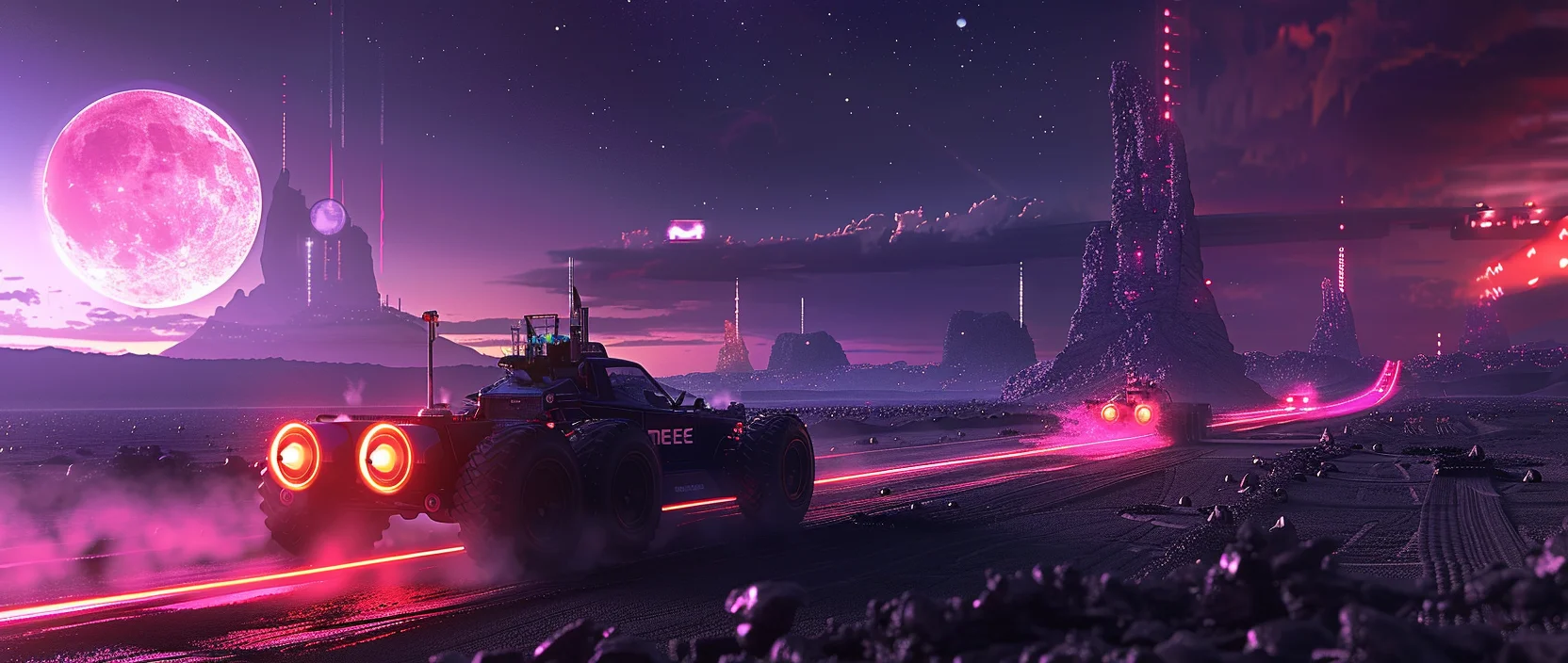MavisRoads is an adventure-themed GameFi project built within the Ronin blockchain ecosystem. At the heart of the gameplay are NFT trucks and trailers that players use to compete in 7-day seasons and earn RON token rewards. The game merges entertainment with decentralized finance tools, offering a unique format that combines competitive mechanics, DeFi infrastructure, and the broader Sky Mavis ecosystem. In this article, we’ll explore the core elements of MavisRoads — from gameplay and tokenomics to technology and market prospects.
Contents
- Concept and Origins of MavisRoads
- NFT Trucks, Seasons, and Gameplay
- Tokenomics and Reward System
- Ronin Technical Infrastructure
- Development Outlook and Conclusion

1. Concept and Origins of MavisRoads
MavisRoads was conceived as a blockchain game developed within the Ronin ecosystem — a purpose-built network launched by Sky Mavis to support Web3 gaming. The game centers around a digital trucking adventure where each NFT truck is a unique asset. The project targets both gamers and Web3 investors, offering assets that can generate passive or active income through seasonal competitions.
The project leverages all core components of the Ronin ecosystem — from the NFT marketplace and Launchpad to native wallets and the RON token. This enables the creation of an engaging gameplay loop backed by a robust token economy. MavisRoads is currently building its community and preparing for a full-scale launch, maintaining interest through social campaigns and early NFT drops.
One of the standout features of the project is its emphasis on short, fast-paced competition cycles, allowing players to quickly see results. This differentiates MavisRoads from many time-consuming and complex Web3 games. Developers aim to deliver a gamified experience with low entry barriers without sacrificing blockchain utility. As a result, the project is accessible even to newcomers unfamiliar with crypto ecosystems.
2. NFT Trucks, Seasons, and Gameplay
The core of MavisRoads gameplay revolves around digital trucks and trailers, represented as NFTs. Players collect, combine, and upgrade their vehicles to compete in weekly gameplay seasons, each lasting seven days. The goal is to optimize routes, select efficient truck-trailer pairings, and manage resources strategically.
Key gameplay mechanics include:
- NFT Collection: Acquire and upgrade trucks and trailers of varying rarity levels.
- Seasonal Events: Weekly competitive events with reward structures.
- Strategic Planning: Route management and choosing optimal combinations for performance boosts.
- RON Rewards: Tokens are distributed based on season rankings and player activity.
- Trading: Ability to buy and sell NFTs through the Ronin Market.
A critical component of the game is the compatibility between trucks and trailers — some combinations yield better bonuses or unlock exclusive routes. This encourages experimentation and fosters a collectible culture around the assets. Seasons are refreshed regularly with new tasks, rules, and cargo types, keeping the experience dynamic. This approach prevents stagnation and sustains player interest without the need for constant large-scale updates.
3. Tokenomics and Reward System
The economic model of MavisRoads is built around the RON token — the native currency of the Ronin network. It serves as the primary medium for transactions, in-game rewards, and access to ecosystem features. Thanks to its low fees and fast throughput, RON is well-suited for high-frequency GameFi interactions.
Key aspects of the token economy are outlined in the table below:
| Component | Description |
|---|---|
| Seasonal Rewards | Top players receive RON token payouts based on seasonal competition results. |
| NFT Trading | Trucks and trailers can be bought and sold on the Ronin Market using RON. |
| Launchpad Integration | New NFT drops and sales are facilitated through Ronin Launchpad, paid in RON. |
| Oracle Support | Oracles help adjust in-game economic parameters based on external data. |
Beyond RON, the game may include bonus NFTs, rare upgrade items, and exclusive in-game enhancements that further reward competitive play. All rewards are distributed transparently and securely via smart contracts. This structure prevents inflation and promotes long-term sustainability. RON’s importance is reinforced by its growing role in other Ronin-based projects as well.

4. Ronin Technical Infrastructure
Ronin is a blockchain built specifically by Sky Mavis to scale Web3 games. Based on Ethereum and fully EVM-compatible, it offers developers a high-performance, low-fee environment to launch and grow blockchain applications. For MavisRoads, Ronin means affordable transactions, rapid processing, and a suite of game-ready developer tools.
The project team benefits from tools like the Ronin Developer Console, NFT Launchpad, SDKs, testnet (Saigon), and the official Ronin Market. These components have already been proven in other successful projects such as Axie Infinity. This foundation ensures technical reliability and gives developers flexibility to expand the game over time.
Moreover, the Ronin network is evolving rapidly — adding security layers, expanding cross-chain support, and lowering the onboarding barrier for users. Developers can access robust documentation and APIs to integrate new game mechanics and economic systems quickly. That makes Ronin one of the most developer-friendly platforms for GameFi, especially for titles like MavisRoads.
5. Development Outlook and Conclusion
MavisRoads is a promising GameFi title that merges gameplay depth with crypto-economic potential. By leveraging NFTs as core assets, distributing RON as rewards, and relying on the Ronin blockchain for infrastructure, it builds a scalable and immersive ecosystem. Its strengths include short seasonal loops, strategic asset management, and an internal economy governed by oracles.
In the near term, the game is expected to introduce new truck types, customization options, and expand the in-game world map. Future development may also include integrations with metaverse platforms and cross-title NFT interoperability within the Ronin network. All of this positions MavisRoads as an example of how Web3 games can combine accessibility, utility, and economic engagement.
The project’s long-term success will depend on community activity, consistent updates, and a well-balanced economy. If the developers can maintain the balance between gameplay enjoyment and financial incentives, MavisRoads could become a model for the next generation of Web3 games. Thanks to its modular design and strategic use of Ronin tools, it is well-positioned for lasting growth in the GameFi sector.






